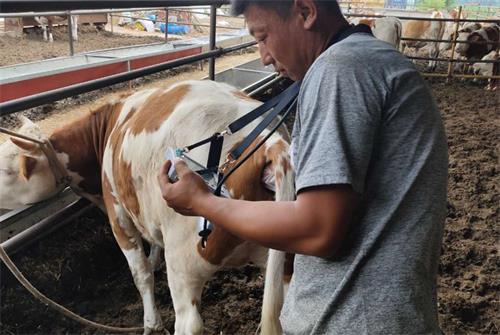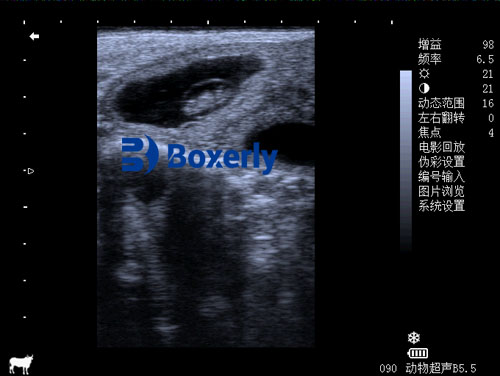Na pecuária moderna, O diagnóstico precoce e o monitoramento contínuo da saúde animal são vitais para a produtividade, bem-estar animal, and economic sustainability. Among the most impactful advancements is the development of portable ultrasound machines—compact yet powerful tools that have revolutionized how farmers, veterinarians, and technicians manage reproductive and general health in cattle, ovelha, Cabras, and pigs.
This article explores the technology behind these devices, how they work in practice, and why they’re rapidly becoming essential equipment on farms across the globe.
The Evolution of Ultrasound in Livestock
Ultrasound technology was first introduced into veterinary practice in the 1960s. Initially bulky and expensive, it was largely confined to specialized veterinary clinics and research institutions. But with the rise of digital imaging, miniaturization, and wireless communication, manufacturers have been able to shrink ultrasound units down to portable and even handheld sizes—without sacrificing image quality or performance.
Today’s portable livestock ultrasound scanners are rugged, Fácil de usar, and highly adaptable. Designed specifically for use in barnyards, fields, and mobile clinics, they empower farmers and veterinarians to make real-time decisions about breeding, diagnosis, and treatment directly at the point of care.
How Portable Livestock Ultrasound Works
Portable ultrasound machines operate on the same basic principles as human medical devices. They use high-frequency sound waves—typically between 2.5 e 7.5 MHz—that are emitted by a probe (also called a transducer). These sound waves penetrate the animal’s body and bounce back upon encountering tissues of different densities, such as muscles, organs, or developing fetuses.
The returning echoes are translated into visual images on a screen. In portable units, these screens are often built into the probe handle itself, attached to a wearable monitor, or displayed on a linked smartphone or tablet via Wi-Fi or Bluetooth.
Common applications in livestock include:
-
Pregnancy diagnosis (early gestation detection in cows, sows, ewes, etc.)
-
Reproductive tract evaluation (por exemplo,, ovarian and uterine health)
-
Backfat and muscle measurement (for assessing body condition)
-
Detecting abdominal diseases or fluid accumulation
Key Technological Features
-
Probe Design Modern probes are built for specific uses: rectal linear probes for cattle pregnancy checks, convex abdominal probes for swine or small ruminants, and even waterproof probes for aquatic species. They are designed to be ergonomic, durable, and easy to disinfect.
-
Image Quality and Resolution Thanks to high-definition displays and digital signal processing, portable ultrasounds now deliver image clarity comparable to full-size machines. Some units offer adjustable frequency ranges and image optimization presets tailored for specific species or scanning goals.
-
Wireless and Cloud Integration Many devices now support image sharing via mobile apps, allowing real-time consultations with remote veterinarians or storage in cloud-based record systems. This streamlines documentation and collaborative diagnosis.
-
Battery Life and Portability High-capacity lithium-ion batteries power most portable ultrasounds for 4 Para 8 hours of continuous use. Many come in wearable formats (like belt clips or arm straps), allowing hands-free scanning during herd work.
-
Software and AI Assistance Some newer models feature AI-enhanced image analysis to automatically detect gestational age or anatomical structures. These smart features reduce operator error and help new users get reliable results faster.

Why Livestock Farmers Are Embracing Portable Ultrasound
-
Early Pregnancy Detection With accurate confirmation as early as 25–30 days post-insemination in cattle and 18–21 days in pigs, farmers can make fast decisions on rebreeding or culling, dramatically improving herd reproductive efficiency.
-
Reducing Stress on Animals Instead of transporting animals to a veterinary facility, mobile scanning allows diagnostics to be performed on-site with minimal stress and disruption—critical for both welfare and production outcomes.
-
Lower Veterinary Costs Frequent on-farm evaluations reduce the need for external services. Many livestock operations now train in-house technicians to perform routine ultrasound procedures, further reducing costs.
-
Better Record-Keeping and Traceability Digital images and associated metadata can be easily stored, retrieved, and shared. This supports improved genetic selection, weight gain monitoring, and compliance with animal welfare and traceability standards.
Challenges and Considerations
Despite the advantages, portable ultrasound does require proper training. Misinterpretation of images can lead to wrong breeding decisions. That’s why equipment manufacturers and agricultural extension programs are investing in training resources—online modules, simulation apps, and workshops—to make the technology more accessible.
Além disso, choosing the right unit depends on the species, typical working environment, and budget. Por exemplo, a dairy farm scanning hundreds of cows weekly might prioritize long battery life and quick probe replacement, while a smallholder pig farm may need a simple tablet-based solution with abdominal scanning capabilities.

Future Trends in Livestock Ultrasound
Looking forward, portable ultrasound systems are expected to continue evolving with:
-
Integration of wearable tech for continuous monitoring
-
Real-time 3D and 4D imaging
-
Advanced diagnostics through machine learning
-
Multispecies presets for mixed-animal farms
-
Solar-charging options for off-grid use
Conclusão
Portable livestock ultrasound represents a powerful blend of veterinary science and engineering innovation. It brings vital diagnostic capabilities directly to the barn, pasture, or pig pen, helping producers optimize reproductive success, improve herd health, and make informed management decisions faster than ever before.
As technology continues to advance, the tools we use to care for animals are becoming not just smaller—but smarter, more efficient, and more accessible. For modern livestock operations, compact truly means powerful.